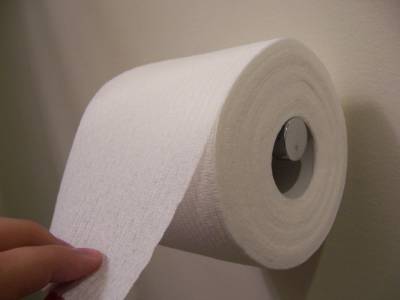 Before toilet paper came into widespread use in the late 19th and early 20th centuries—yes, that recently!—personal hygiene was typically performed using materials that were a bit less soft and absorbent. Newspapers, catalogs, and similar reading materials were as likely as they are now to appear in bathrooms, but much less likely to leave the room (or outhouse, as the case may be) intact. Farther back in history (or when paper was otherwise unavailable), such items as rags, leaves, and even stones were used. The ancient Romans reportedly used sponges on sticks.Perhaps as far back as the sixth century A.D., paper was sometimes used for sanitary purposes in China—at least among the wealthy. In the late 14th century, toilet paper of a sort was made for the Chinese emperor—in large, 2 foot-by-3 foot (0.6 x 0.9m) sheets. But almost 300 years after the invention of the flush toilet in 1596, there was still no such thing as commercially produced paper designed exclusively as a toilet accessory—and certainly no paper that could safely be flushed.
Before toilet paper came into widespread use in the late 19th and early 20th centuries—yes, that recently!—personal hygiene was typically performed using materials that were a bit less soft and absorbent. Newspapers, catalogs, and similar reading materials were as likely as they are now to appear in bathrooms, but much less likely to leave the room (or outhouse, as the case may be) intact. Farther back in history (or when paper was otherwise unavailable), such items as rags, leaves, and even stones were used. The ancient Romans reportedly used sponges on sticks.Perhaps as far back as the sixth century A.D., paper was sometimes used for sanitary purposes in China—at least among the wealthy. In the late 14th century, toilet paper of a sort was made for the Chinese emperor—in large, 2 foot-by-3 foot (0.6 x 0.9m) sheets. But almost 300 years after the invention of the flush toilet in 1596, there was still no such thing as commercially produced paper designed exclusively as a toilet accessory—and certainly no paper that could safely be flushed.
Toilet Paper History
This entry was posted in Uncategorized. Bookmark the permalink.
Fascinating post. Thank you.
Pingback: Community 101 « everyday theology